Art Cars have been fixtures at BMW for almost 50 years, but the idea to create automotive artworks came from a man whose canvas was the racetrack, whose only painted lines were the elevens drawn as he left the pitlane.
French racing driver and auctioneer Hervé Poulain dreamed of competing at the 24 Hours of Le Mans, his country’s most famous sports car race. In 1975, he came up with a way to bring his twin passions together on the track.

The 35-year-old Poulain approached the boss of BMW Motorsport, Jochen Neerpasch, with an idea: Instead of wearing a typical corporate livery, his car would painted with the design of a well-known contemporary artist. Neespasch agreed. He provided the #93 “Batmobile” 3.0 CSL, and Poulain secured the services of American sculptor Alexander Calder.
Poulain did make it to Le Mans, and Calder’s bold use of contrasting colours ensured that the BMW stood out on track. Unfortunately, Poulain and his co-drivers, Jean Guichet and Sam Posey, failed to finish the 24-hour race. Nonetheless, the car was such a hit with fans that BMW has continued to commission artists to paint its cars ever since.
To date there have been 21 such commissions, officially termed by BMW as Art Cars, created by some of the world’s most renowned artists. Let’s take a view of this exhibition of acceleration.
Alexander Calder’s 3.0 CSL
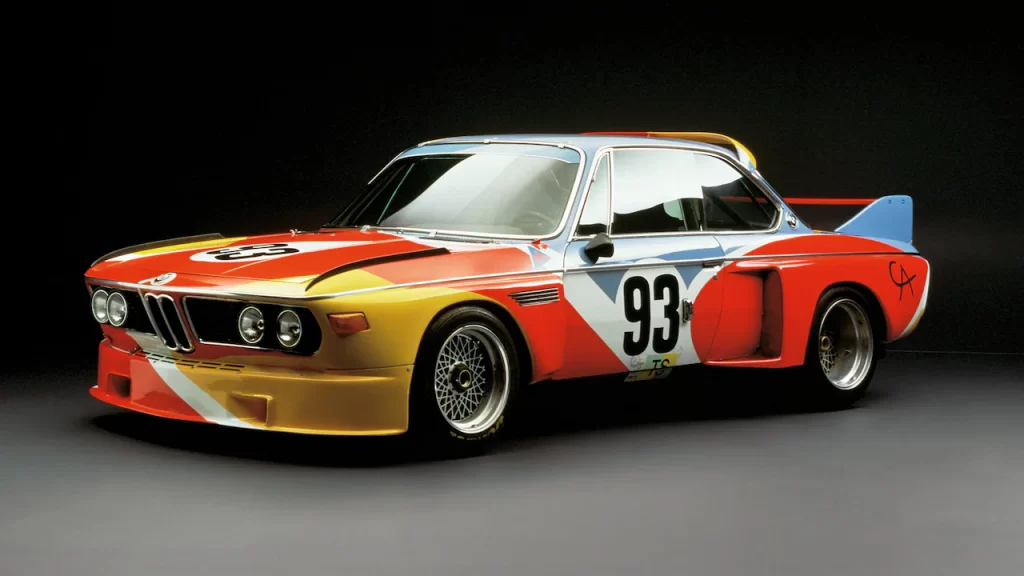
Poulain started the series in 1975 when he presented Calder with a scale model of the 3.0 CSL over lunch. “OK to paint the car of Poulain and his colts, regards to everyone,” Calder wrote in lieu of any official contract.
Frank Stella’s 3.0 CSL
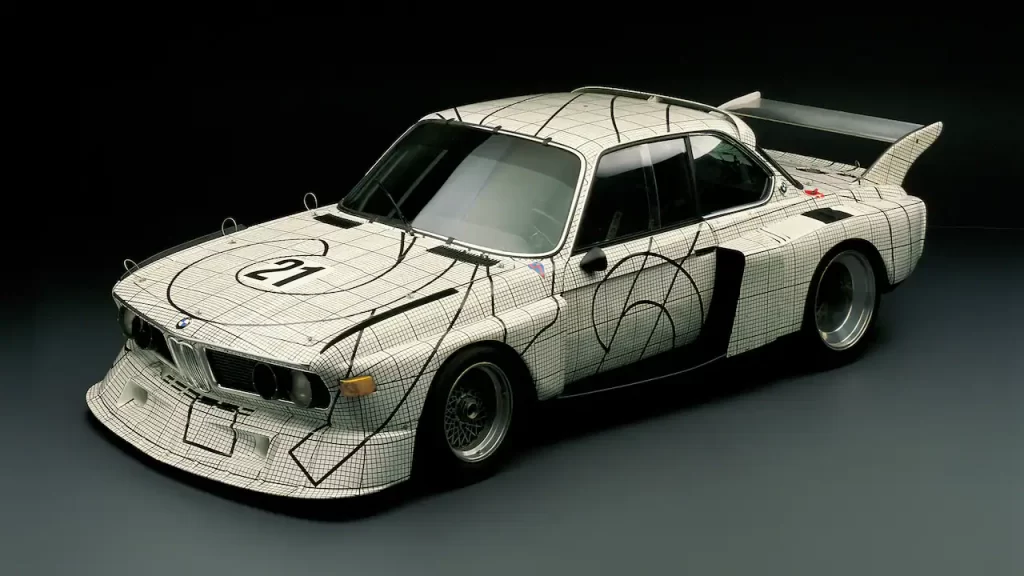
For the following year’s Le Mans, in 1976, Calder’s compatriot Frank Stella was entrusted with the #21 CSL. Stella’s graph paper–like design was inspired by technical drawings. “My design is like a blueprint transferred onto the bodywork,” said Stella. Driven by Brian Redman and Peter Gregg, its 750bhp motor expired just three hours into the race.
Roy Lichtenstein’s 320i Turbo
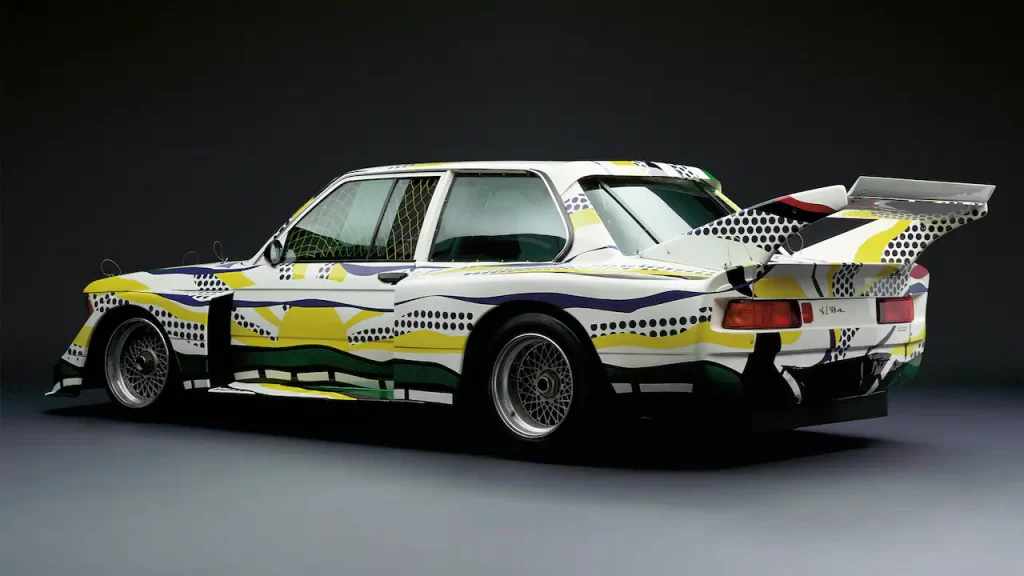
In 1977, an Art Car finally completed the grueling race in Le Mans. Poulain was again behind the wheel, along with Marcel Mignot, and their 320i Turbo came in ninth overall and first in class. The car’s artwork came from pop artist Roy Lichtenstein, who employed his trademark Ben-Day dots to fine effect in a landscape-like design.
“I wanted the lines I painted to be a depiction of the road showing the car where to go,” said Lichtenstein. “The design also shows the countryside through which the car has traveled. One could call it an enumeration of everything a car experiences – only that this car reflects all of these things before actually having been on a road.”
Andy Warhol’s M1
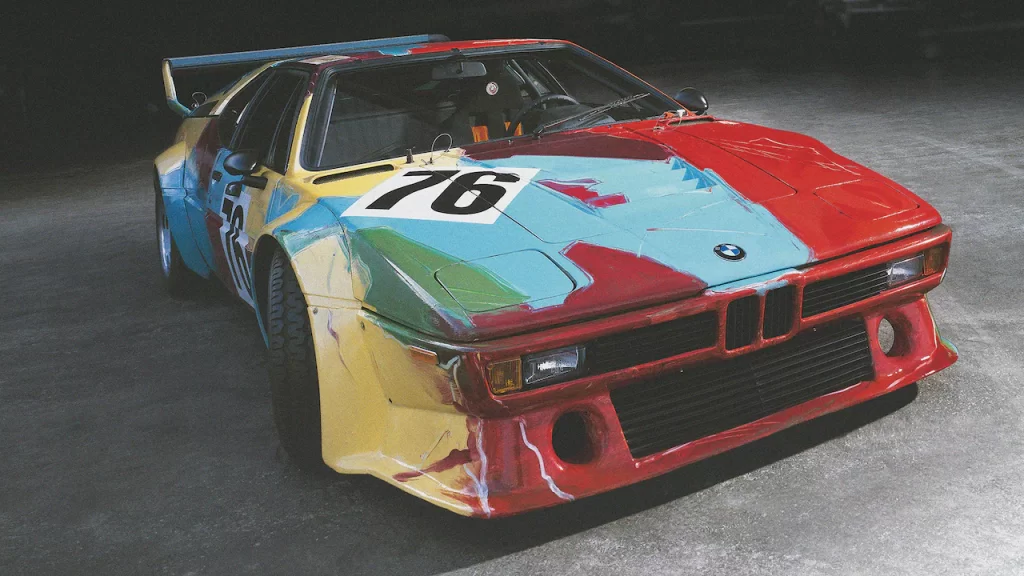
The most famous of all the art cars made only one race appearance: at 1979 24 Hours of Le Mans. Unlike preceding designers of Art Cars, who handed their designs to the BMW paint shop, which actually applied the paint to the car, Andy Warhol was determined to paint his Art Car himself.
In just 28 minutes, Warhol applied almost 6kg of paint. “I attempted to show speed as a visual image. When an automobile is really traveling fast, all the lines and colors are transformed into a blur,” said Warhol. The weight of Warhol’s brush strokes didn’t seem to hinder the M1, and it finished the race in sixth place.
Ernst Fuchs’ 635 CSi
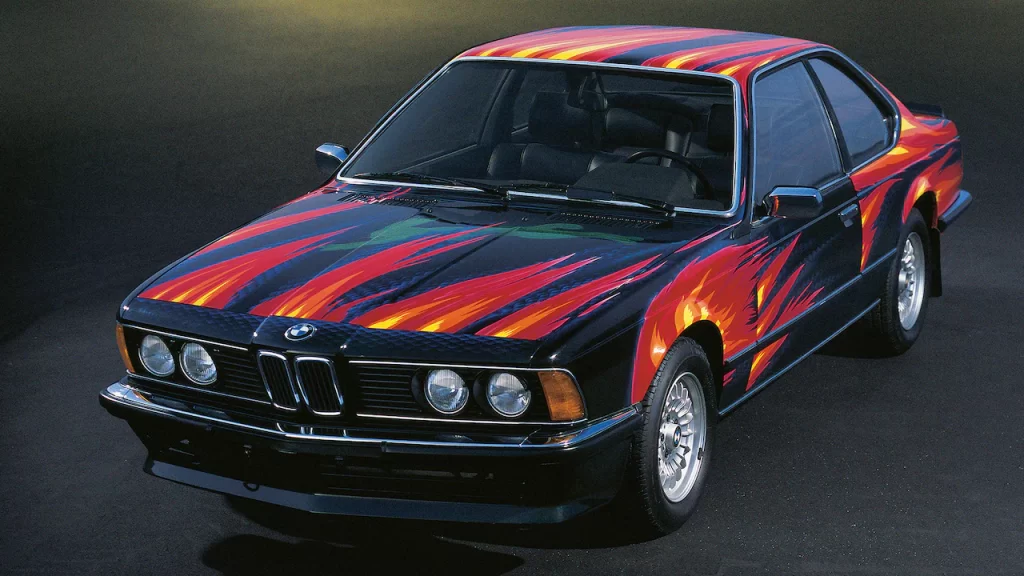
Austrian artist Ernst Fuchs was the first to create a road-going Art Car for BMW. His 1982 635 CSi is called “Fire Fox on a Hare Hunt,” and features almost hot-rod-style flames licking the bodywork.
“I see a hare at night running across the autobahn and leaping over a burning car,” explained Fuchs. “A primeval fear and a bold dream of surmounting a dimension in which we live. It shows me its colours, I read them in its lines, in its contours, I hear its voice calling out emphatically and see that beautiful hare leaping through the flames of love, averting all fears.”
Robert Rauschenberg’s 635 CSi
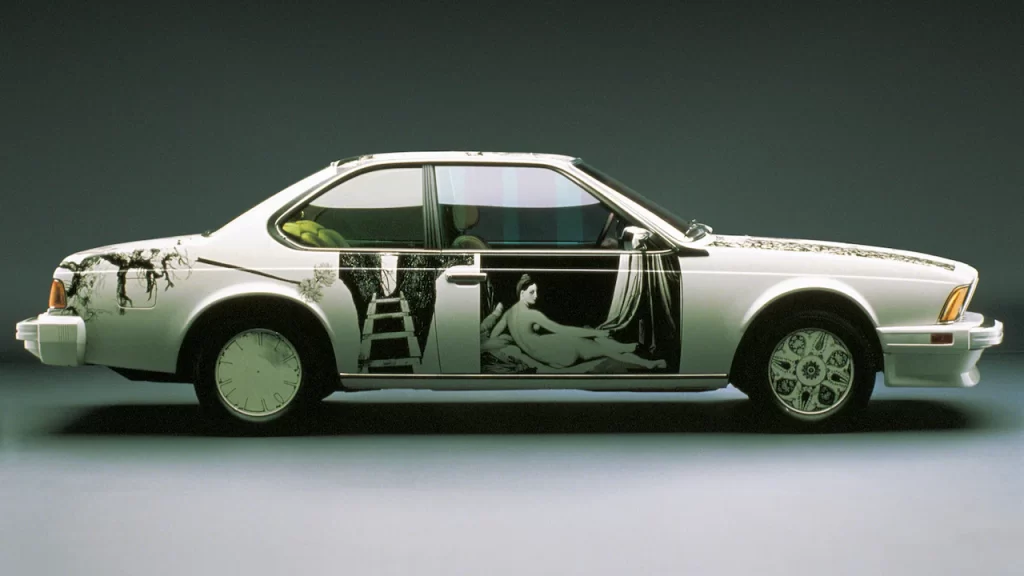
A second 635 CSi was handed over in 1986 to American Robert Rauschenberg, who used an innovative foil technique to apply photographic images to the sheet metal and create a collage typical of his style. It remains the only BMW Art Car to have been driven on the road by the artist himself. “I think mobile museums would be a good idea. This car is the fulfillment of my dream,” said Rauschenberg.
Michael Jagamara Nelson’s M3
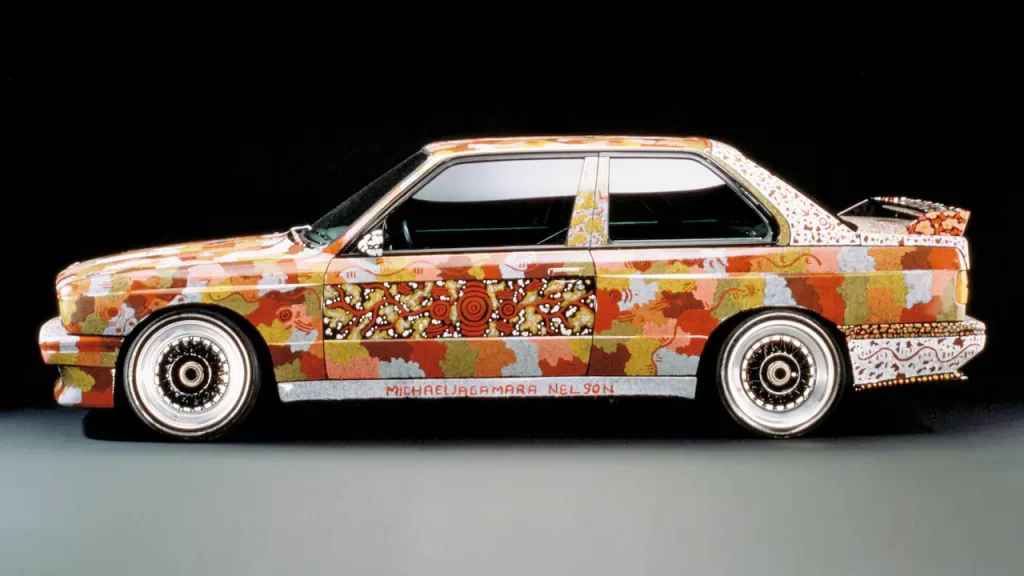
BMW describes its 1989 exhibit as “a dream car” because Australian artist Michael Jagamara Nelson said that he worked his dreams into the design, which reflects the culture of the Aboriginal people. “A car is a landscape as it would be seen from a plane – I have included water, the kangaroo, and the opossum,” he said.
Ken Done’s M3 Group A
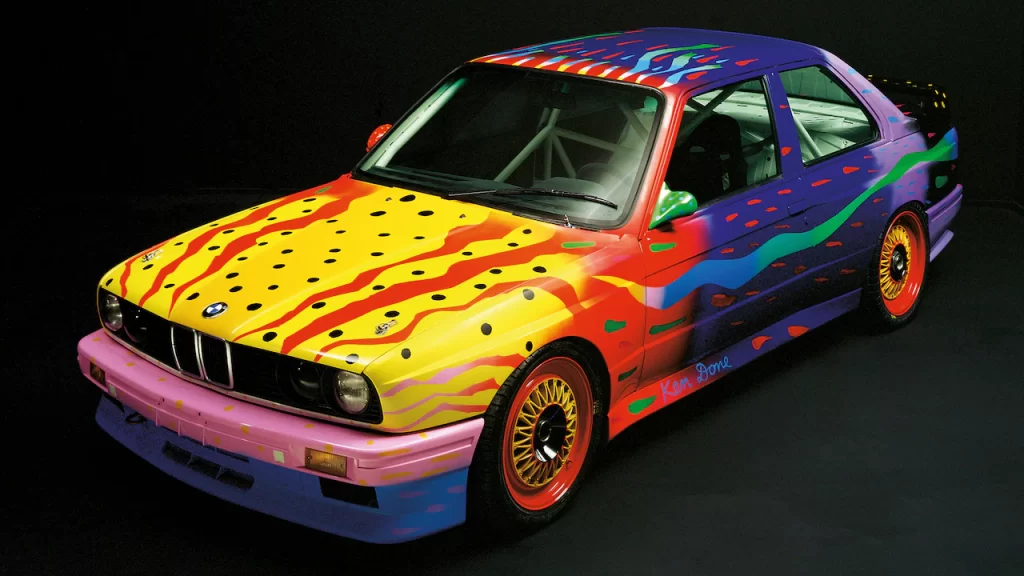
The year 1989, was a Down Under double: Born in Sydney, Ken Done designed his M3 Touring Car to represent modern Australia. The country’s beaches and wildlife adorned the car, which won the Group A Driver’s Championship in the hands of Jim Richards before it became a museum piece. “I have painted parrots and parrot fish. Both are beautiful and move at an incredible speed. I wanted my BMW Art Car to express the same thing,” said the artist.
Matazō Kayama’s 535i
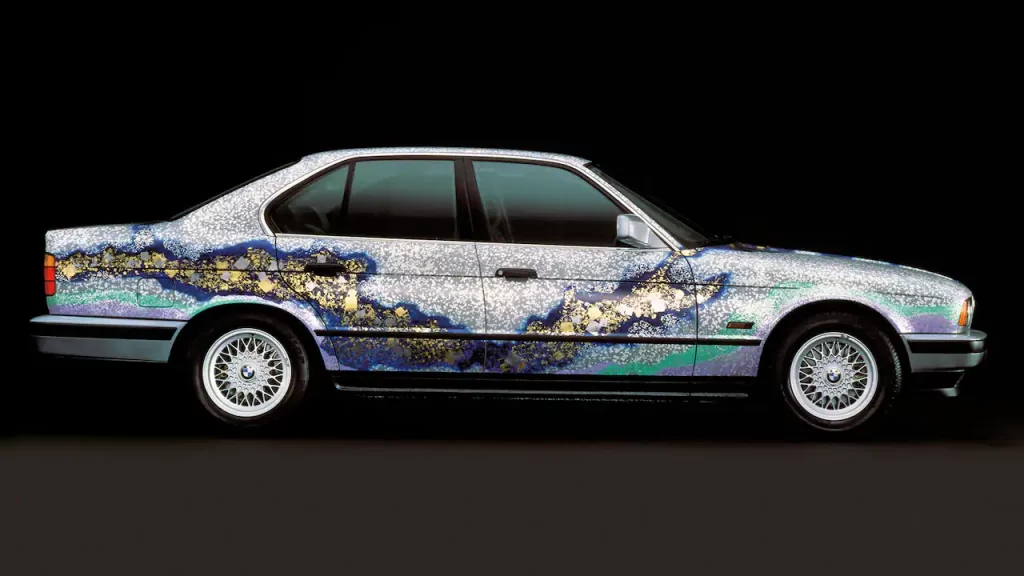
Japan’s Matazō Kayama used foil printing to transfer his river landscape–inspired design to the body of a 1990 535i. “I wanted to give the impression of snow crystals in my work,” he said of the piece.
César Manrique’s 730i
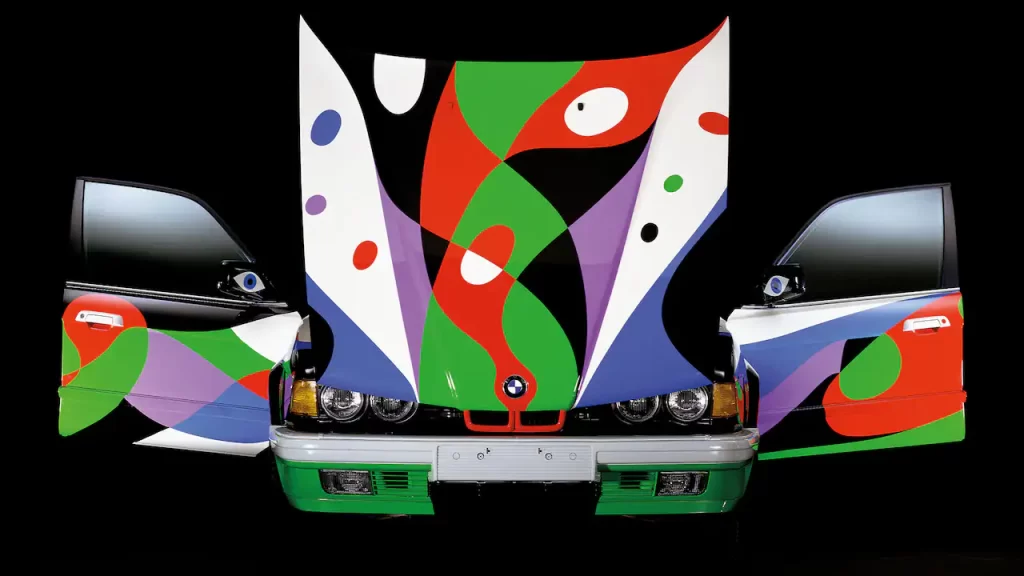
For the avant-garde design he applied to a 730i sedan, Spaniard César Manrique took inspiration from the island of Lanzarote, off the coast of West Africa, using the black of its volcanic rock, the green of its forests, and red for life as the key colours. “My idea was to design the BMW in such a way as to give the impression of it effortlessly gliding without any resistance,” offered Manrique.
A.R. Penck’s Z1
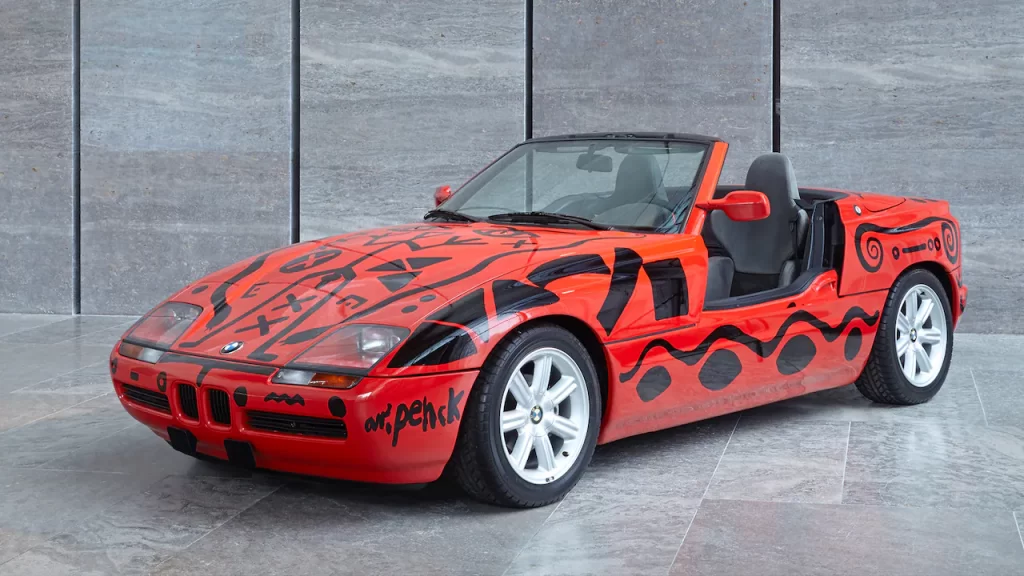
For once the unusual drop doors aren’t the most striking feature of BMW’s 1991 Z1 roadster. Germany’s A.R. Penck looked back to humanity’s earliest artwork, cave paintings, to come up with a bold black-on-red creation.
Esther Mahlangu’s 525i
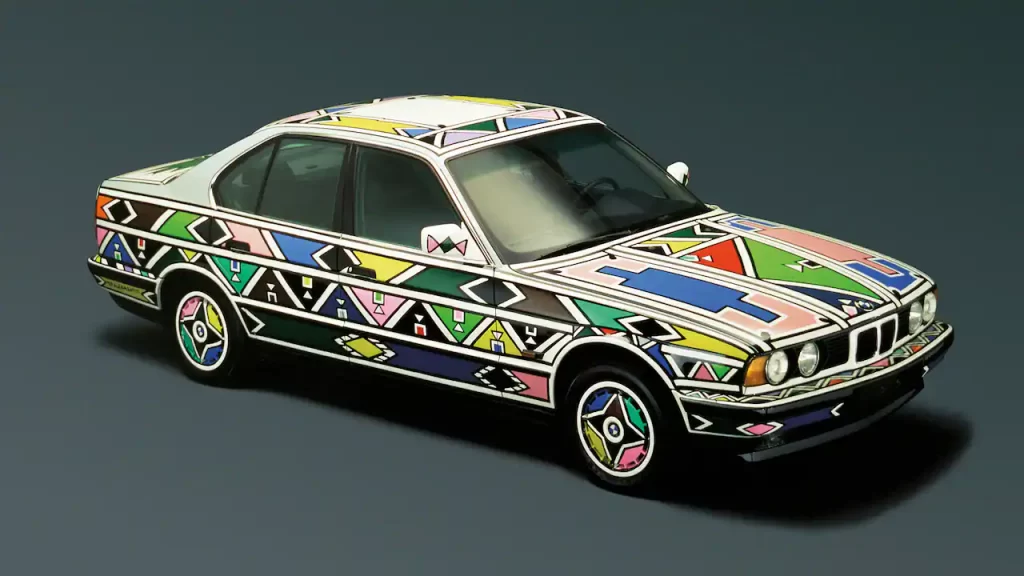
In 1991, we witnessed the first time that a female artist designed a BMW Art Car. South African Esther Mahlangu paid homage to the culture of her homeland in a design which, she said, evokes “how my tribe decorate their houses.”
Sandro Chia’s M3 GTR
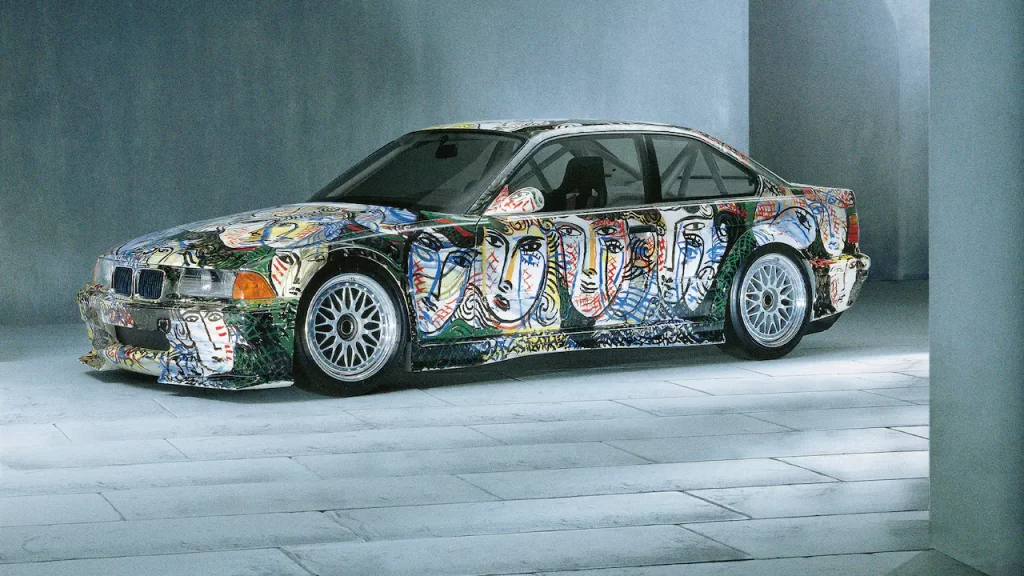
“All eyes are upon an automobile. People look closely at cars. This car reflects their gaze,” said Italian painter and sculptor Sandro Chia of his 1992 M3 GTR race/art car, which features a series of faces. The idea is that the observer feels observed.
David Hockney’s 850 CSi
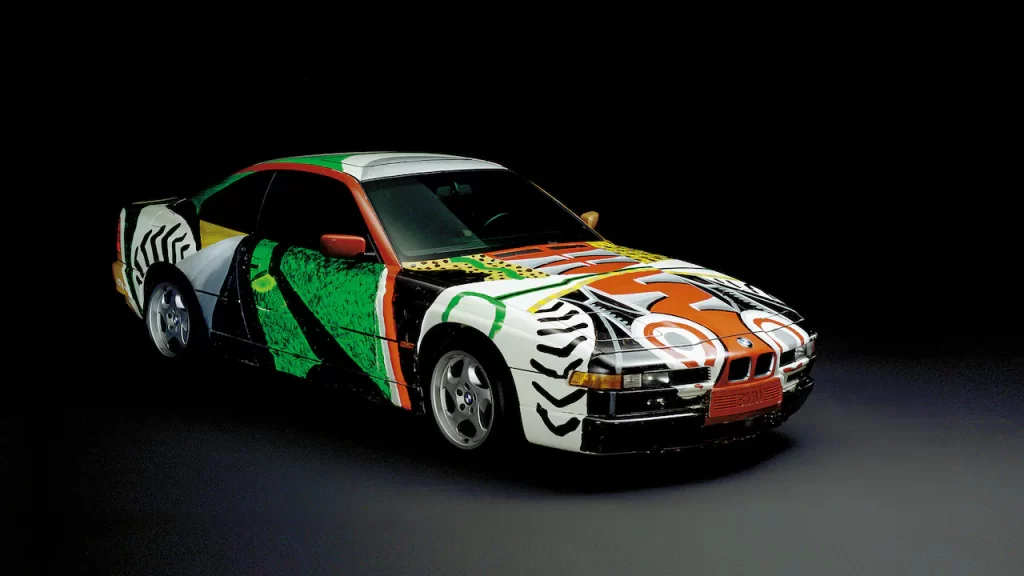
In 1995, it was the turn of British national treasure David Hockney. BMW had been trying to get Hockney to paint a car for some time, and, eventually, the German company’s persistence paid off. Hockney elected to turn the car inside out, with his paintwork presenting the artist’s idea of what lies beneath its metallic skin. Look closely and you can see Hockney’s interpretation of the engine, the driver, and even a dog on the back seat.
Jenny Holzer’s V12 LMR
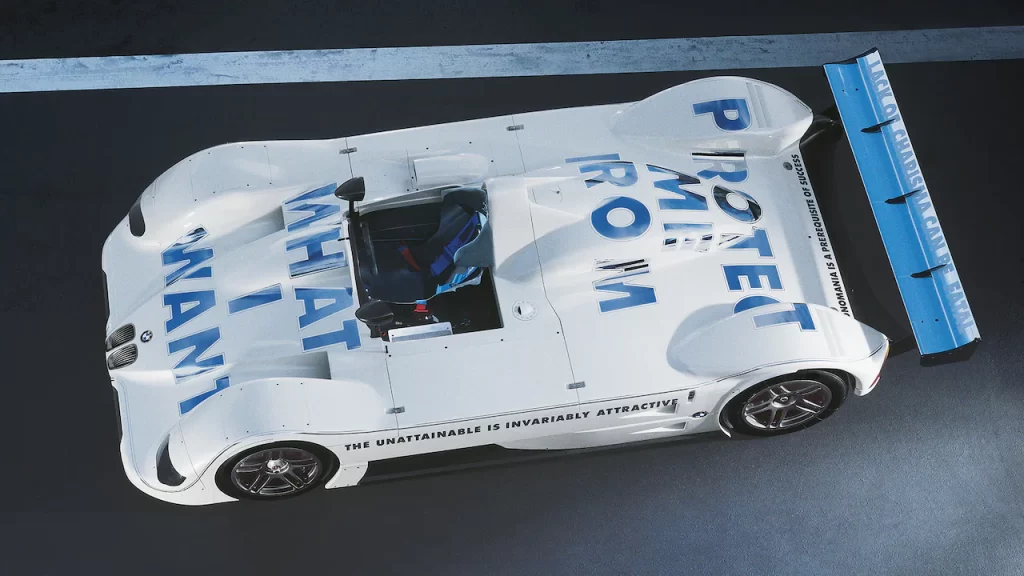
After a decade, 1999 marked the return of BMW-commissioned art to a race car thanks to American artist Jenny Holzer and a V12 LMR. Holzer took BMW’s traditional racing colour palette of blue and white, but, where perhaps one might expect sponsors’ logos, she expressed thought-provoking statements: “Protect Me From What I Want”, “The Unattainable Is Invariably Attractive”, “Lack Of Charisma Can Be Fatal” and “Monomania Is A Prerequisite Of Success”.
The car took part in pre-qualifying for the 1999 24 Hours of Le Mans but didn’t start the race. A second V12 LMR was driven to victory by Joachim Winkelhock, Pierluigi Martini, and Yannick Dalmas.
Olafur Eliasson’s H2R
There was a gap of eight years before Denmark’s Olafur Eliasson was recruited by BMW to create an artwork out of the hydrogen-powered H2R racing prototype from 2007. Unlike the designers of other Art Cars, Eliasson devised a cocoon-like structure to house the car. This was then doused in water in a cold room to create “an armor of ice.”
“By bringing together art, design, social and environmental issues, I hope to contribute to a different way of thinking-feeling-experiencing cars and seeing them in relation to the time and space in which we live,” said the artist.
Jeff Koons’ M3 GT2
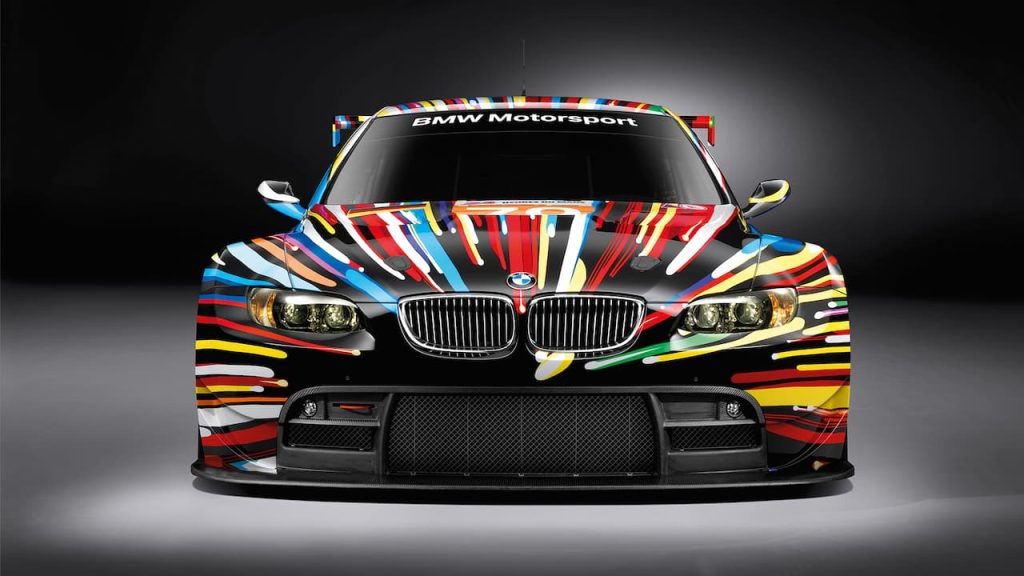
In 2010 the Art Car went back to its roots: American Jeff Koons’ M3 GT2 was a riot of pop art color. “These race cars are like life, they are powerful and there is a lot of energy,” said Koons. “You can participate with it, add to it, and let yourself transcend with its energy. There is a lot of power under that hood and I want to let my ideas transcend with the car – it’s really to connect with that power.” Sadly, that power didn’t lead to success at Le Mans: The drivers of the M3 GT2 – Dirk Werner, Dirk Müller, and Andy Priaulx – were forced to retire the car with a fuel sensor issue after 53 laps.
Cao Fei’s M6 GT3
Chinese digital artist Cao Fei embraced augmented reality with her 2017 M6 GT3 art car. In real life all the viewer would see is a jet black race car, but when seen through an app, the car becomes the centerpiece of a vivid ‘Quantum Garden.”
“The Digital Art Mode gives the BMW driver the chance to experience the ever-changing digital landscapes of a multifaceted universe in a screen world, where abstract poetry and sensory pixels intersect. Its network of open-ended spectra are connecting our hearts to the call of goodwill from the depths of the universe,” said Fei.
John Baldessari’s M6 GTLM
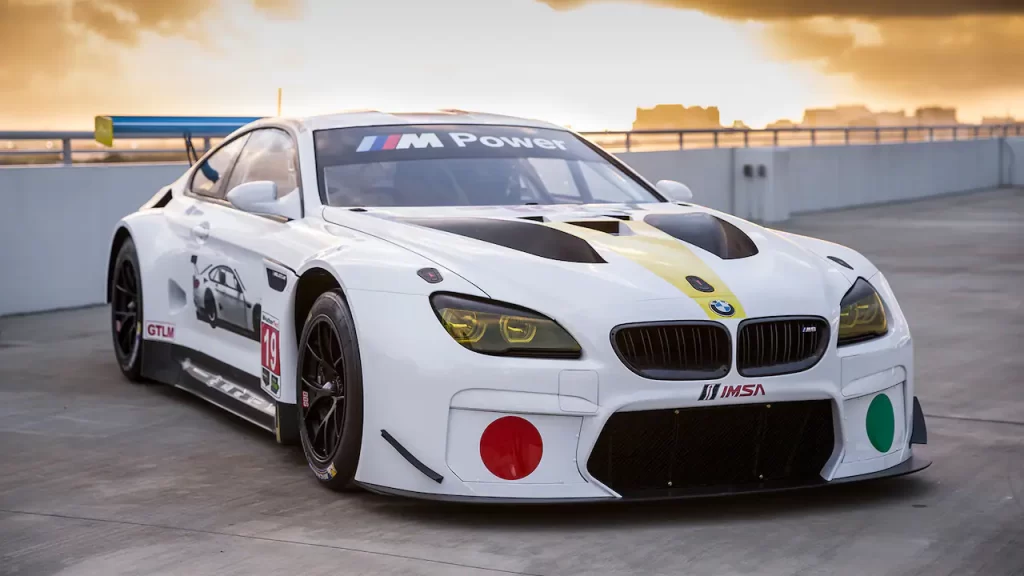
California-based Baldessari describes his 2016 M6 GTLM race car as “definitely the fastest artwork I ever created!” “I entered unchartered territory, not just in terms of the subject, but moving from two- to three-dimensional art,” said Baldessari. “The ideas came all at once: for instance, the red dot on the roof, so you can see it from above, FAST on one side, and a picture of the car on the other side. I like the ambiguity, having two-dimension and three-dimension at the same time.”
Julie Mehretu’s M Hybrid V8
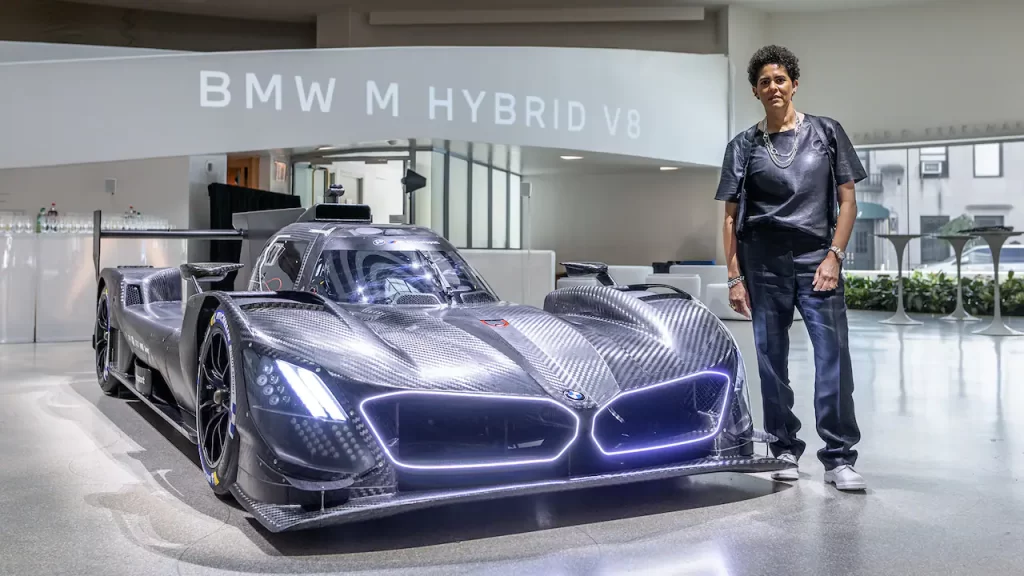
The 2024 running of the 24 Hours of Le Mans in June will mark the debut of Ethiopian artist Julie Mehretu’s first Art Car, so we still have no idea what it will look like. Expect an “unconventional style of painting and drawing that confronts viewers with a visual articulation of contemporary experience, social behavior, and the psychogeography of space,” says BMW.
Esther Mahlangu’s i5 Nostokana
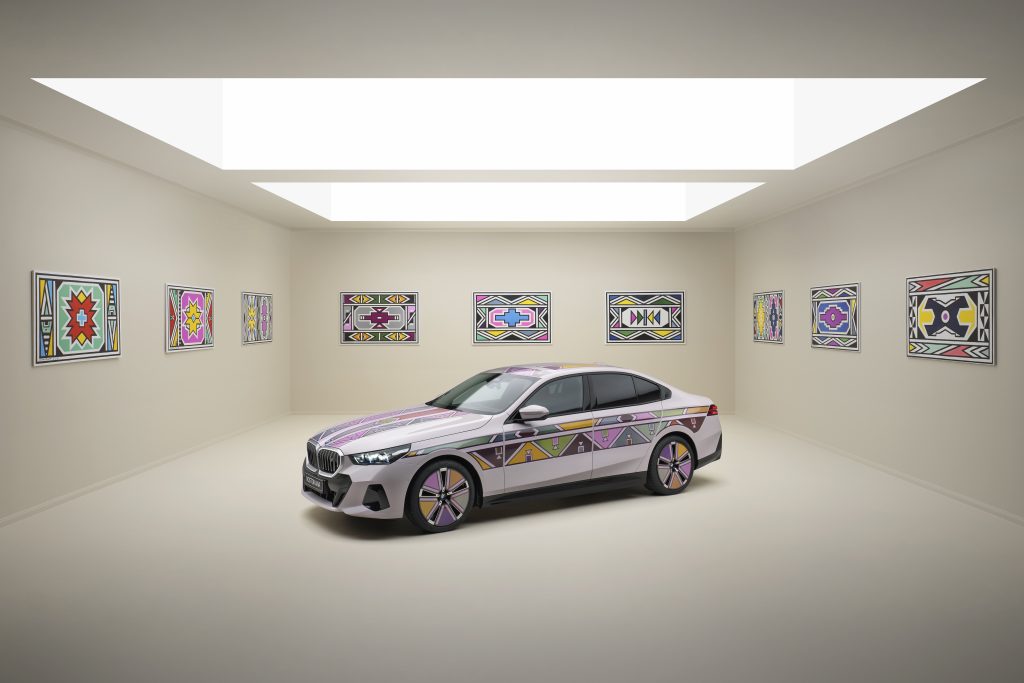
The latest art car is a tribute to Mahlangu’s 1991 original. This time it’s an electric i5 covered in a special E-ink film which can show electronic animations inspired by her artistic language. These animations are accompanied by a soundscape designed by BMW Creative Director Renzo Vitale, featuring Mahlangu’s voice and brush strokes. “It is fascinating to me to see how modern technology can expand my art and make it accessible to a completely new audience,” says Mahlangu.



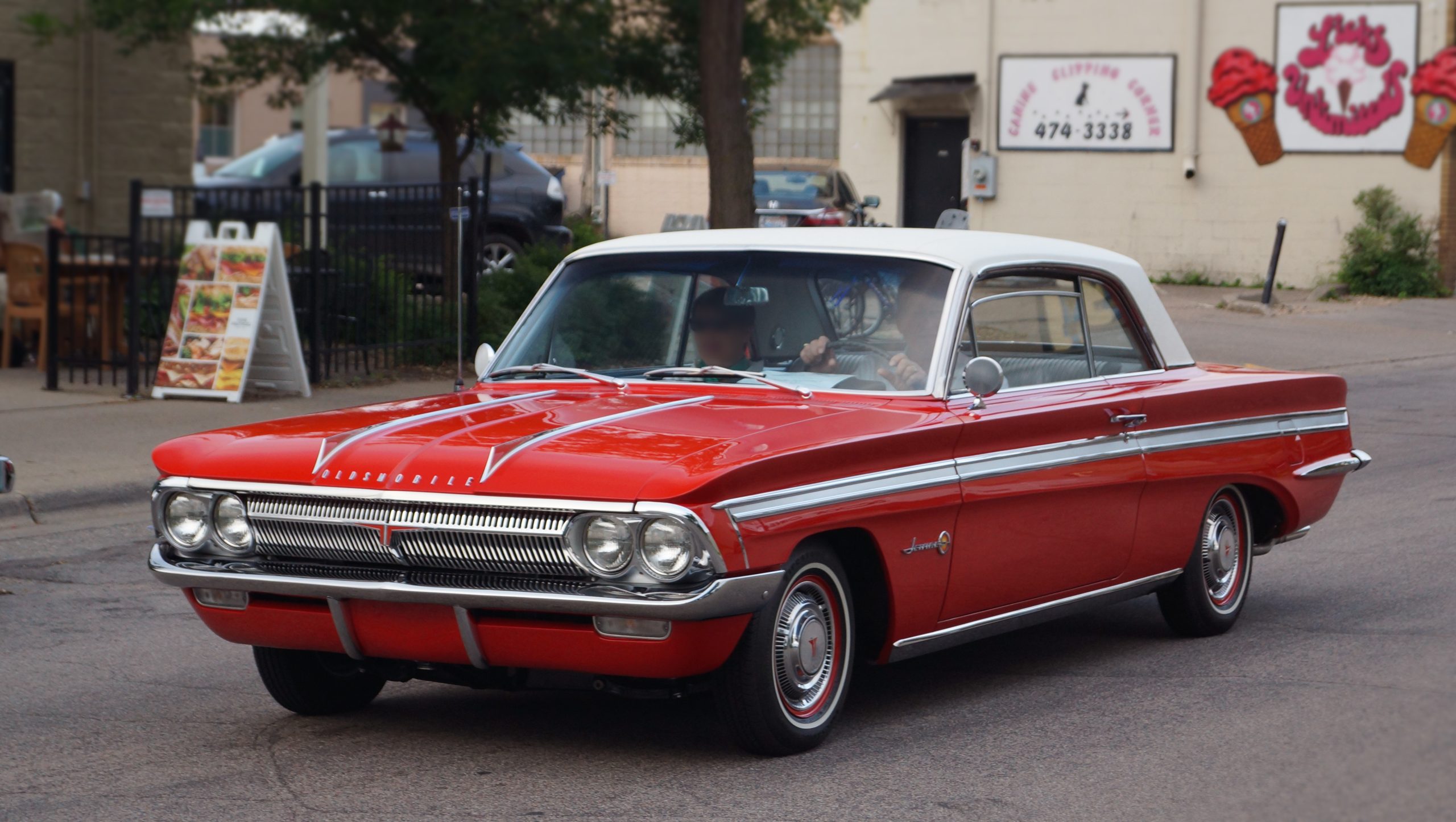





The Jeff Koons and Alex Calder cars were defo the best IMHO – have both in 1/18